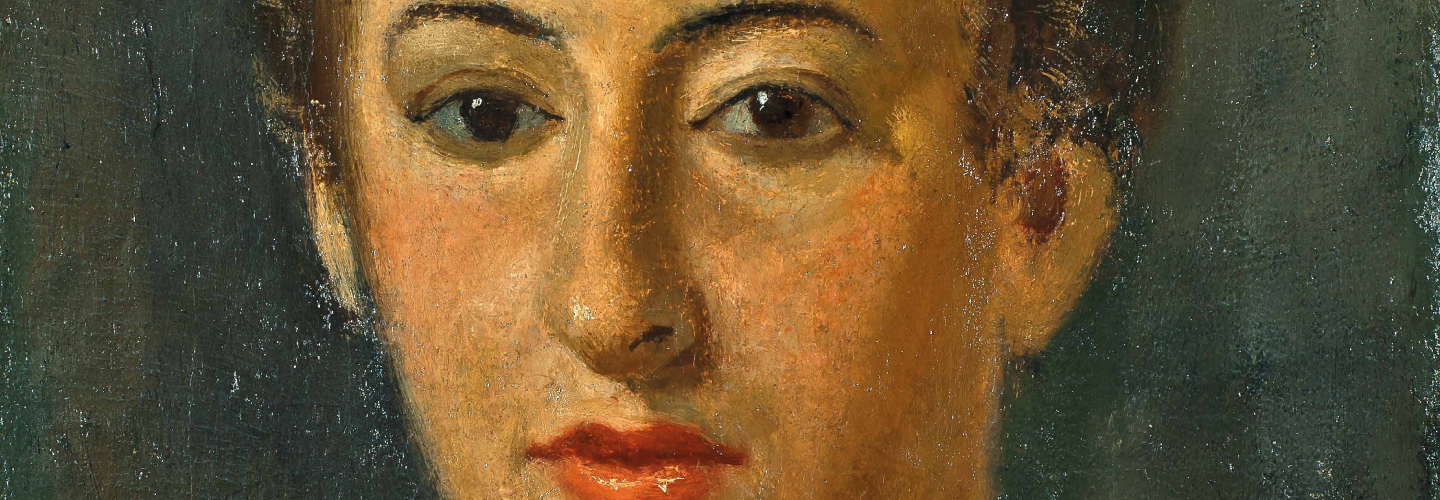The cultural program “A Year of Art in Florence for Giovanni Colacicchi” foresees a noteworthy calendar of events at various Florentine venues spotlighting the key twentieth-century painter.

Flavia Arlotta: Woman and Painter of the 1900s is a small but dignified exhibition, open until September at Florence’s Accademia delle Arti del Disegno. Its nearly 30 paintings by the Sorrento-born artist span a time period that runs from 1933 to 2005. The daughter of Russian sculptress Elena Albrecht Von Brandenburg and wealthy Neapolitan intellectual Ugo Arlotta, Flavia (1913-2010) moved to Florence with her family in 1930. She began training at the Accademia di Belle Arti with luminary painter Felice Carena, who, at the time, was the painting department’s chair. He immediately suggested that Arlotta be mentored by the formidable Giovanni Colacicchi. The latter was already on his way to becoming one of the top exponents of twentieth-century figurative art in Italy.
A passionate albeit obstacle-ridden romance ensued between Colacicchi and Arlotta, and the couple became lifelong partners. Colacicchi was already married when they met in 1930, and embarked for South Africa in 1936 in an initial attempt to fall out of love with Arlotta, leaving his studio on via della Robbia to the young artist, who then benefitted from working alongside the couple’s mutual friend, painter Onofrio Martinelli. Many of Arlotta’s earlier still-life works on view are representative of this period. Both Colacicchi and Martinelli painted portraits of Arlotta in the 1930s, which are also visible in the exhibition.
When Colacicchi returned to Italy in 1937, the pair reconciled and moved to Rome, where they sojourned for two years before re-settling in Florence. Arlotta recalls their Roman period with great affection: “We lived in continuous friendly assiduity (and happy poverty) with Guttuso [with whom Colacicchi shared a studio], Trombadori, Cagli, Morante and Moravia.” Though this artist hobnobbed with some of the leading names in twentieth-century art and culture, she is most often celebrated for the profound simplicity of her landscapes, portraits and still-life works: all of which can be appreciated in this quiet neighborhood show, where everyday objects and familiar, homey landscapes are given front-and-center importance. Francesco Colacicchi, the couple’s youngest son, also a painter of note, compares his parents’ art and underlines its inherent connection with their own complementary identities: “In her canvases, there are jewel boxes, teapots, wine carafes, simple wooden tools. All these things were never bought as ‘decorative objects’, instead they were painted in the atelier or in the house where they had been placed for use. One can see that my father’s painting was done by a man and that my mother’s was done by a woman – and rightfully so. Both one and the other transfer their own humanity onto their works.” (Paintings and drawings by Colacicchi, who became the Accademia delle Arti del Disegno’s director in 1960, are currently on show in two retrospective exhibitions hosted at the Villa Bardini Museum and Casa Siviero.)
“Twentieth-century painting, whether physical or metaphysical, has made us too accustomed to forgetting things. Flavia Arlotta’s painting makes me remember them. It’s this reversal of relationship that seduces me,” distinguished literary critic Luigi Baldacci once wrote of her talents. “It’s as if things were called by their own name for the very first time- in addition to being painting, Flavia’s work is nomenclature.”
Look for her still life with cardoons, pine cones and shells entitled A Tribute to Giovanni, which the author painted in 1942 after having uprooted her family from their home in Florence’s via dell’Osservatorio for fear it would become a target for Allied bombings due to its proximity to the train tracks. She painted the work during their two-year stay at the so-called “Casa del Dono”, a country house in Vallombrosa where Bernard Berenson and his lifelong partner Nicky Mariano, dear friends of the couple, also hosted or hid refugees, including Jewish artists and soldiers who had escaped from concentration camps. Arlotta produced several landscapes during this war-torn period, a genre with which she continued to experiment well into the 1950s.
Of the works produced during later stages of her career, exhibit-goers are likely to enjoy The Manger Scene, which draws on Neapolitan traditions. The artist created it for her newborn grandson Giovanni Ivison Colacicchi in 1980. “It’s not graceful. It’s not picturesque. It’s successful, well-balanced, and with touching immanent religiousness,” her grandson writes in the show’s small but worthy catalog (available for a minimum donation of 10 euro).
Arlotta was an active painter until 2005. Her evocative, slightly damaged Duniascia (1950) which survived the artist’s dissatisfaction (and attempt to recycle the portrait’s canvas) is an interesting example of her interest in portraiture. The sitter was Arlotta’s Russian nanny, who lived with the family for nearly 50 years. The Little Girl in a Red Coat (1979) is another of many female protagonists the artist captured on canvas in the later stages of her career. Arlotta’s papers, as well as her husband’s, are stored in the Gabinetto Vieusseux’s contemporary archives. Arlotta died in her beloved house on via dell’Osservatorio in 2010.
Flavia Arlotta: Woman and Painter of the 1900s
Accademia delle Arti del Disegno
Via Orsanmichele 4 – Florence
Open on Mondays, 10am to 5pm until September 6, 2014
A selection of Arlotta’s paintings are on view on the newly inaugurated bilingual website giovannicolacicchi.com








